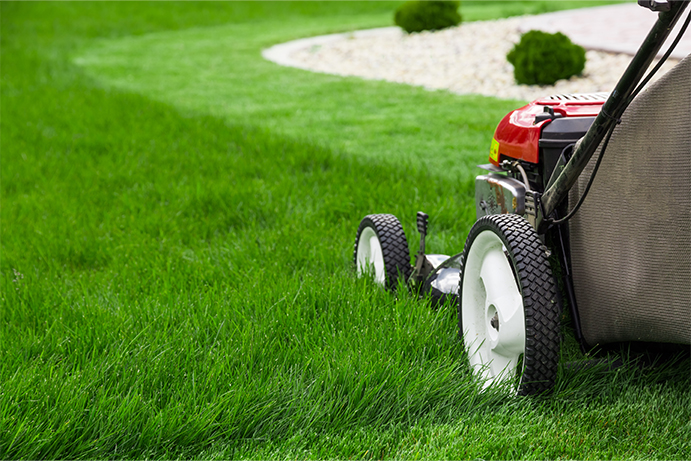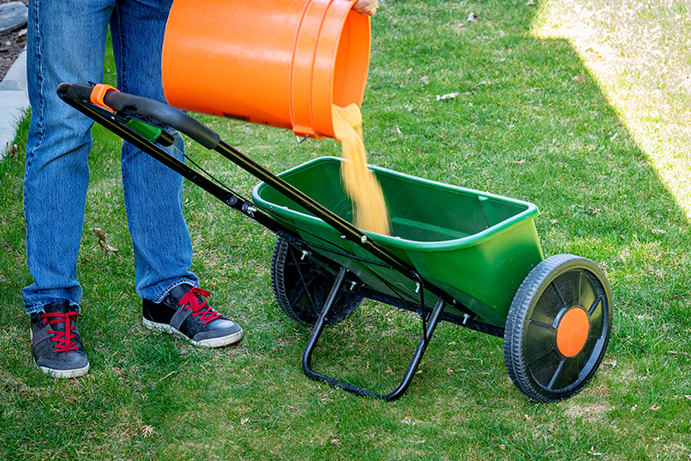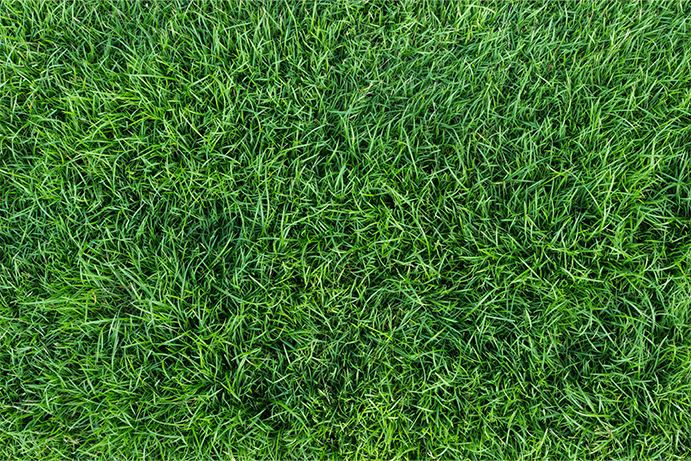Lawn Care Guide
June 20, 2022 by Laura QD
Lawn Care Guide – How to Care for Your Grass All Year Round
By Rachael – Content Editor
Published June 2022
For many of us, the lawn is the centre of our garden, and we take great pride in keeping it looking its best. Maintaining a healthy lawn all year round is no easy task, as it requires a lot of maintenance. Our guide to lawn care is a handy reminder of all the monthly tasks that will ensure your grass is in its very best condition throughout the year.

If you want to keep your lawn pet-friendly, try Safelawn.
If there has been a snowfall, try to avoid walking on the grass too much, as it can lead to a build-up of snow mould.
When the ground is not frozen or waterlogged, try to remove as many old leaves and debris as possible.
Give your mower some routine maintenance, including cleaning and sharpening the blades. This will help it be in its best condition ahead of the upcoming busy season.
March
By now the days are getting warmer and it’s time for the initial two cuts of the year.
Adjust your mower blades so they just remove the tips of the grass. Do not use a close-cut, as it would likely lead to the grass browning.
April
Now is the time to start mowing your lawn regularly and keep on top of any weeds coming through. If you have persistent weeds, it may be better to dig them out.
If the surface is uneven and needs smoothing out, try applying a top-dressing.
You may discover bare patches, which can now be remedied with a patch fix mix.
Unless your lawn is less than a year old, it will benefit from being scarified (providing this was not done in the autumn).
Rake the grass, bringing your metal rake firmly across the surface to break up the thatch. Whilst it may look a little worse for wear at first, it will provide your lawn with great benefits over the coming months.

View our online range of lawnmowers here.
It’s time to give your lawn a feed. If you applied weedkiller last month, use a simple liquid lawn feed to give the grass a boost. If you haven’t applied any weedkiller yet, try a combination mix with both feed and weed & moss killer. Combination mixes are a great way to save time.
Looking a little on the thin side? Try overseeding with some lawn seed. Once you have added the seed, apply feed regularly and water if there are dry spells.
Continue to mow regularly to keep on top of growth.
June
The weather can be unpredictable this month, and during dry spells, your lawn will need to be watered thoroughly to keep it healthy.
As it’s growing season, weeds will be sprouting through regularly. You can keep on top of them by hand-pulling them or they can be spot treated with a weedkiller.
Continue to cut your grass regularly, taking just a little off each time. If your lawn is prone to Clover, try raking over the lawn before mowing to remove the runners.
July
Now that the temperature is soaring, there is the potential for a hosepipe ban. If there is a drought, your grass may turn brown and lay dormant, but it will soon revive once the rain returns.
If the weather is particularly dry, leave the clippings on the lawn surface after mowing to help seal in the moisture. Although this is not recommended if you are still suffering from weeds.
Apply some liquid or granular feed and keep on top of weeding. Rake occasionally to prevent debris from building up.
August
Continue to mow your lawn regularly and give it a good soaking during dry spells.
Prolonged periods of drought may cause cracks in the ground. These can be filled with lawn top dressing, such as compost, lawn sand or topsoil.

You can stock up on lawn feed here.
Be ready to get busy again, there is lots to do in preparation for autumn.
Now is the time to start mowing less often, we also recommended adjusting the height of your cutting blades to leave the grass longer. Thicker grass is better protected from potential snowfall.
Before mowing, check for worm casts that may appear on your lawn. Once dry, these can be removed with a stiff brush.
If you find any worn patches, these can be repaired with a turf or patch fix.
Scarify the area to remove any thatch, and then aerate your lawn. This process will leave holes in the ground, which can then be filled by brushing over some top dressing. We would recommend top soil mixed with grass seed for this application.
Finally, apply an autumn feed and moss killer combination.
Whilst it may not look as appealing after this treatment, it will be better prepared for the harshness of winter.
November & December
Regular raking will ensure your lawn is kept free of debris and leaves. If there is a spell of mild weather, you may need to do the occasional mowing for any active growth.
You may find your bordering shrubs and trees have grown a lot over the summer. Trim back any foliage that casts lengthy shadows over your lawn.
During long, wet spells or icy weather, try to avoid walking directly on your grass.
Before storing garden tools and machinery away for winter, give them a look over. They may require cleaning and oiling to be in the best condition for next year.
Find more advice and ideas below:
Lawn Care Products | Garden Advice | Gardening Equipment | Back to Home






 Next Day Delivery
Next Day Delivery Store Finder
Store Finder Current Rewards
Current Rewards Click & Collect
Click & Collect





